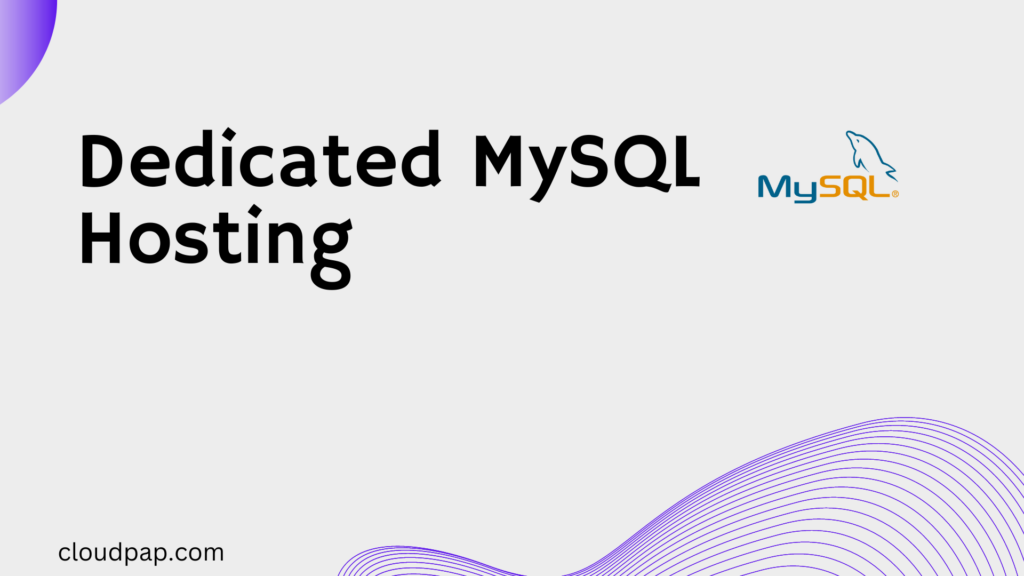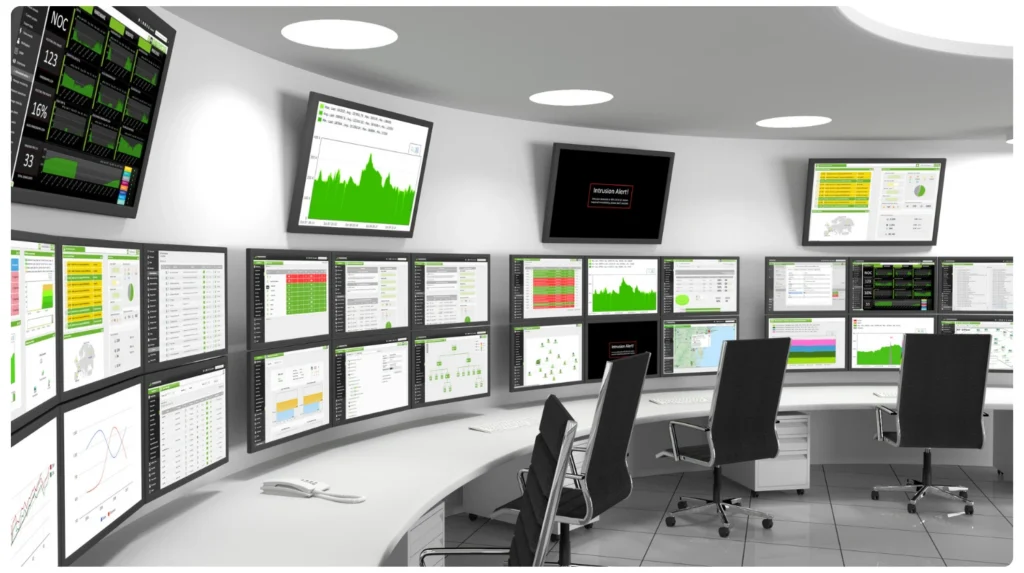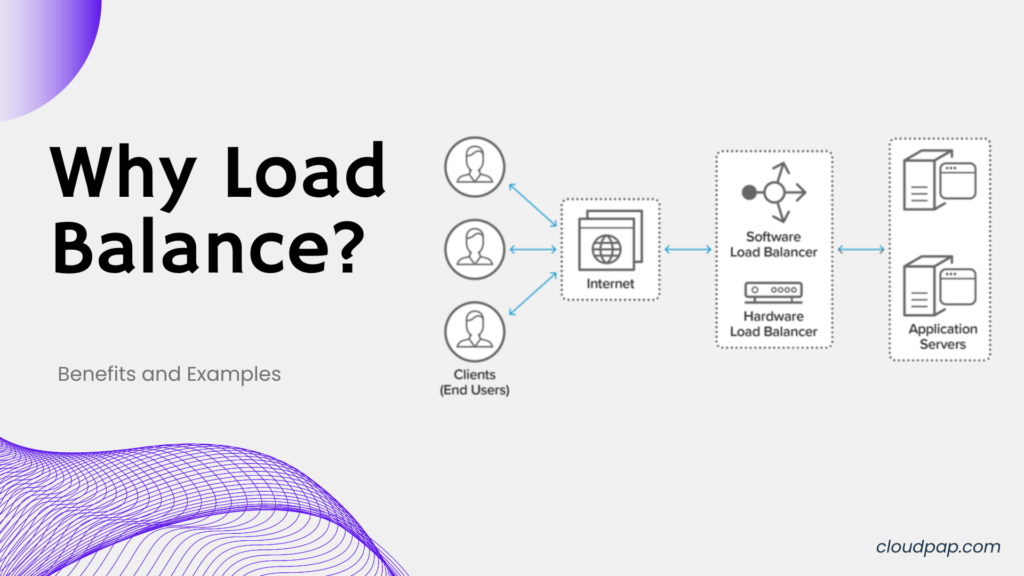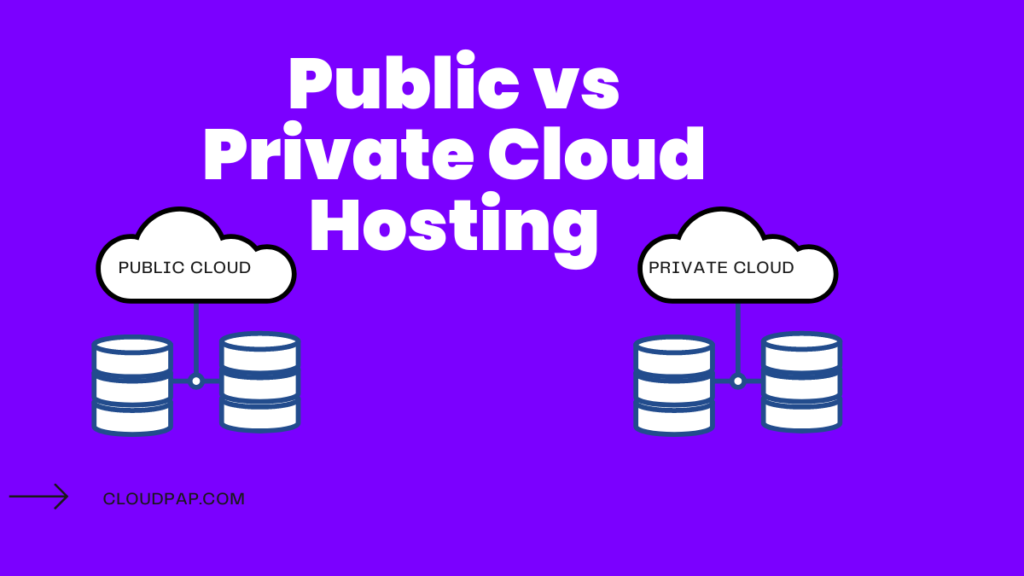When it comes to gaming, the sky is not the limit anymore. The cloud is! With advancements in technology, cloud computing has emerged as a game-changer in the world of gaming.
It has revolutionized the way we play games and interact with them. By leveraging its power, gamers can now enjoy seamless gameplay without worrying about hardware limitations or storage issues.
Cloud computing for gaming is a new frontier that promises to take our gaming experience to new heights.
In this article, we’ll explore what it means, how it works, and why you should be excited about it. So sit back, grab your controller or keyboard and let’s dive into the world of cloud computing for gaming!
What is cloud computing?
Cloud computing refers to the practice of using remote servers hosted on the internet to store, manage, and process data, instead of relying on local servers or personal computers. It allows users to access their data and applications from anywhere with an internet connection. In the gaming context, cloud computing enables gamers to stream games from powerful servers, eliminating the need for extensive local hardware.
Types of cloud computing
1. Public cloud
Public cloud services are provided by third-party companies and made available to the general public over the internet. Users share the same infrastructure and resources, resulting in cost-effective solutions. Public cloud gaming platforms offer a wide range of games and services accessible to anyone with an internet connection.
2. Private cloud
Private cloud refers to cloud services dedicated to a single organization. It provides more control, customization, and privacy compared to public clouds, as the infrastructure is solely used by the organization. Private cloud gaming solutions are popular among large gaming companies or esports organizations that require exclusive access and heightened security.
3. Hybrid cloud
Hybrid cloud combines elements of both public and private clouds, allowing organizations to leverage the benefits of both models. It provides greater flexibility and scalability, with the ability to choose where to store and process data. Hybrid cloud gaming setups are often used by game developers who require scalable infrastructure during development and testing stages, and then switch to public cloud platforms for game distribution.
Cloud Gaming Explained
a. What is cloud gaming?
Cloud gaming, also known as gaming on demand, enables players to stream games directly from remote servers without the need for extensive local hardware. It offers a seamless gaming experience by shifting the processing power and storage to the cloud. In other words, instead of running games on a local device, the game is processed and rendered in the cloud, and the player receives the video and audio feed in real-time.
b. How does cloud gaming work?
1. Overview of the infrastructure
Cloud gaming relies on robust data centers that house high-performance servers capable of rendering and processing game graphics. These servers handle the heavy lifting, while the player’s device acts as a display and input device. When a player initiates a game session, the game is launched on a remote server, and the gameplay video is encoded and compressed for transmission over the internet to the player’s device.
2. Streaming vs. downloading games
Unlike traditional gaming, where games are downloaded and installed locally, cloud gaming allows users to instantly stream games over the internet. This eliminates the need for large game downloads and updates, saving time and storage space. With streaming, players can access a vast library of games without worrying about installation or storage limitations.
3. Latency and bandwidth considerations
The success of cloud gaming heavily depends on the speed and stability of the internet connection. Low latency (the time it takes for data to travel from the player’s device to the cloud server and back) and sufficient bandwidth are crucial to ensure smooth gameplay and minimize input lag. Internet service providers with high-speed connections and low latency are essential for an optimal cloud gaming experience.
Advantages of Cloud Gaming
a. Access to a vast game library
Cloud gaming offers gamers access to an extensive catalog of games. With the games stored in the cloud, players can enjoy a wide range of titles without the need to purchase or download each one individually. This expands gaming options and allows players to discover new games they might not have considered before.
Unlimited options for gamers
Cloud gaming platforms often feature subscription-based models, where players pay a monthly fee to access a vast library of games. This provides unlimited gaming options, allowing players to explore various genres, play older titles, and discover hidden gems.
b. Lower hardware requirements
1. Eliminating the need for high-end gaming PCs
Cloud gaming eliminates the need for owning expensive gaming hardware, such as high-end gaming PCs or gaming consoles. The heavy lifting is performed by the servers in the cloud, which handle the processing and rendering tasks. Players can enjoy high-quality graphics and smooth gameplay on modest devices, reducing the financial barrier to entry for gaming enthusiasts.
2. Play on lower-end devices
Cloud gaming enables players to enjoy resource-intensive games on devices that would otherwise be unable to run them. Even older or less powerful devices can stream games from the cloud, providing a level playing field and making gaming accessible to a broader audience.
c. Cross-platform compatibility
1. Seamlessly switch between devices
Cloud gaming platforms offer the flexibility to switch seamlessly between different devices. Players can start a game on one device and continue playing on another without losing progress. For example, a player can begin a game on their PC and then continue playing on their smartphone during a commute. Cross-platform compatibility enhances convenience and ensures a consistent gaming experience across devices.
2. Play with friends on different platforms
Cloud gaming allows players on different platforms to play together in multiplayer games. Whether someone is using a PC, a gaming console, or a mobile device, they can join the same game and enjoy multiplayer experiences. This eliminates the platform restrictions that traditionally limited gaming communities and fosters a more inclusive and connected gaming environment.
Key Players in Cloud Gaming
Microsoft xCloud (Xbox Cloud Gaming)
1. Features and benefits
Microsoft xCloud, also known as Xbox Cloud Gaming, offers a compelling cloud gaming service. It provides players with access to a vast library of Xbox games, including both console and PC titles. The service offers high-quality graphics, smooth gameplay, and the ability to pick up where players left off on their Xbox console or PC.
2. Available platforms and devices
xCloud is accessible on various platforms and devices, including Xbox consoles, Windows PCs, Android smartphones, and tablets. It offers a versatile gaming experience across a range of devices, giving players the freedom to choose how and where they play.
Google Stadia
1. Features and benefits
Google Stadia is a cloud gaming platform that aims to revolutionize the gaming industry. It boasts seamless streaming of games up to 4K resolution and 60 frames per second. With Stadia, players can enjoy high-quality visuals and responsive gameplay without the need for powerful local hardware.
2. Available platforms and devices
Google Stadia is compatible with several platforms and devices, including Chromecast Ultra, Google Chrome web browsers, and select Android smartphones. This wide range of compatibility ensures that players can access and enjoy their favorite games on their preferred devices.
NVIDIA GeForce NOW
1. Features and benefits
NVIDIA GeForce NOW offers players the ability to stream their existing PC game library to various devices. It leverages powerful NVIDIA GPUs for high-performance gaming and supports real-time ray tracing for enhanced visuals. GeForce NOW also provides low-latency gameplay, ensuring a smooth and responsive experience.
2. Available platforms and devices
GeForce NOW is available on multiple platforms, including Windows PCs, macOS, Android devices, and select Smart TVs. This broad compatibility allows players to access their games from a variety of devices, maximizing convenience and flexibility.
Challenges and Limitations of Cloud Gaming
a. Internet connection requirements
1. Minimum speed and stability
Cloud gaming demands a stable and high-speed internet connection to ensure a smooth gaming experience. Players require a connection with sufficient bandwidth and low latency to minimize lag and latency issues. In areas with limited internet infrastructure or unreliable connections, cloud gaming may not be a viable option.
b. Latency and input lag
1. Impact on gameplay experience
Latency, the delay between player input and the corresponding action on the screen, can impact the overall gameplay experience. While cloud gaming providers strive to minimize latency, it can still be noticeable, especially in fast-paced and competitive games. Input lag may affect the precision and responsiveness of player actions, potentially impacting performance.
c. Data usage and bandwidth limitations
1. Potential for high data consumption
Cloud gaming requires significant data transmission, especially when streaming high-quality graphics and video content. Players with limited data plans or internet service providers that impose data caps may face constraints when it comes to extensive gaming sessions. It’s important for players to be aware of their data usage and consider the potential impact on their internet bills.
d. Infrastructure availability
1. Regional limitations and accessibility
The availability of cloud gaming services can vary depending on the region. Some services may have limited server locations, resulting in higher latency for players in certain areas. Additionally, access to cloud gaming platforms may be restricted in certain countries due to regulatory or licensing issues, limiting the global reach of these services.
Future Trends in Cloud Gaming
A. 5G and cloud gaming
The advent of 5G technology holds significant promise for cloud gaming. With faster speeds and lower latency, 5G networks can provide an even smoother and more responsive gaming experience. As 5G infrastructure expands, cloud gaming is likely to become more accessible and widely adopted.
B. VR and cloud gaming integration
The integration of virtual reality (VR) technology with cloud gaming can unlock new levels of immersion and realism. Cloud-based VR gaming eliminates the need for local processing power, making VR experiences more accessible to a broader audience. Players can enjoy high-quality VR gaming without investing in expensive VR-ready hardware.
C. Increased competition and innovation
Cloud gaming has attracted the attention of tech giants and gaming companies, leading to increased competition and innovation in the industry. New players are likely to enter the market, introducing unique features, pricing models, and content offerings. This competition will drive advancements and improvements in cloud gaming services, benefiting gamers with a wider range of choices.
D. Potential for cloud-based game development
Cloud computing not only benefits gamers but also game developers. Cloud-based game development platforms and tools enable developers to collaborate more effectively, streamline workflows, and scale their infrastructure as needed. Cloud-based development environments can accelerate game development cycles, leading to more frequent releases and innovative game experiences.
Cloud Computing for Game Developers
Benefits of cloud computing for game development
1. Scalability and flexibility
Cloud computing provides game developers with scalable and flexible infrastructure. They can scale their computing resources up or down based on demand, ensuring optimal performance during peak periods and cost savings during slower periods. Cloud-based development environments also enable teams to work collaboratively, improving productivity and efficiency.
2. Cost-effectiveness
Cloud computing offers cost benefits to game developers by reducing the need for extensive on-premises infrastructure. Developers can leverage cloud-based services and resources on a pay-as-you-go basis, eliminating the upfront costs associated with purchasing and maintaining hardware. This cost-effectiveness allows smaller indie developers to compete with larger studios on a more level playing field.
Cloud-based game development tools and platforms
1. Unity Cloud Build
Unity Cloud Build is a cloud-based service that automates the build, testing, and deployment process for Unity game projects. It provides developers with a streamlined workflow, allowing them to focus on game creation rather than managing infrastructure. Unity Cloud Build supports collaboration, version control integration, and cross-platform deployment.
2. Amazon Lumberyard
Amazon Lumberyard is a cloud-connected game engine that enables developers to create high-quality games with advanced graphics and physics simulations. It integrates with AWS services, providing developers with scalable and secure infrastructure for game development and live operations. Lumberyard also includes built-in Twitch integration, facilitating interactive streaming and community engagement.
3. Microsoft Azure PlayFab
Microsoft Azure PlayFab offers a comprehensive set of backend services for game development and live operations. It provides features such as player authentication, multiplayer matchmaking, in-game analytics, and cloud-based storage. PlayFab integrates seamlessly with other Azure services, allowing developers to leverage the full power of the cloud for game development.
Cloud Gaming vs. Traditional Gaming
Pros and cons of cloud gaming
1. Accessibility and convenience
Cloud gaming offers unparalleled accessibility, allowing players to access their games from multiple devices and locations. The convenience of streaming games without the need for extensive hardware or physical media is a significant advantage. However, reliance on a stable internet connection and potential latency issues can impact the overall gaming experience.
2. Dependence on internet connection
Cloud gaming is heavily reliant on a stable and high-speed internet connection. In areas with poor internet infrastructure or during internet outages, the ability to access and play games may be compromised. Additionally, high data consumption may pose challenges for players with limited data plans.
Pros and cons of traditional gaming
1. Ownership and physical media
Traditional gaming offers the advantage of ownership and physical media. Players can collect game discs or cartridges and have full control over their game library. They can play games offline without relying on internet connectivity. However, physical media can be lost, damaged, or become obsolete over time, requiring repurchases or upgrades.
2. Hardware requirements and costs
Traditional gaming often requires significant investments in gaming consoles or high-end gaming PCs. These hardware costs can be a barrier to entry for some players. Upgrading hardware to meet the requirements of new game releases can also be costly. Additionally, physical hardware is subject to wear and tear and may require maintenance or replacement.
Security and Privacy Concerns in Cloud Gaming
Data protection and user privacy
Cloud gaming services must prioritize data protection and user privacy. Implementing robust encryption protocols and security measures ensures that players’ personal information and gaming data remain secure. Players should familiarize themselves with the data protection practices of cloud gaming providers to ensure their privacy is respected.
Cloud gaming service provider reliability
Players need to trust cloud gaming service providers with their gaming experiences and data. Service providers should maintain transparency regarding their data handling practices, uptime guarantees, and service reliability. Transparent communication fosters trust and confidence in the cloud gaming ecosystem.
Terms of service and user agreements
Players should carefully review the terms of service and user agreements of cloud gaming platforms. These documents outline how the service provider handles player data, including potential data usage and sharing practices. Understanding these policies allows players to make informed decisions about their privacy and data protection.
Wrap Up
The future of gaming lies in the cloud, and cloud computing has transformed the gaming industry in remarkable ways.
With the benefits of accessibility, affordability, and cross-platform compatibility, cloud gaming offers a more inclusive and convenient gaming experience.
As technology continues to advance, cloud gaming will evolve further, integrating with 5G and VR to deliver immersive experiences.
Game developers also benefit from cloud computing, leveraging scalable infrastructure and collaborative development environments.
While challenges exist, such as internet requirements and security concerns, the advantages of cloud gaming are propelling the industry forward and shaping the future of gaming.
Related: Cloud Computing for AI: Unleashing the Power of Transformation






